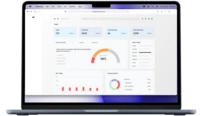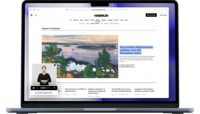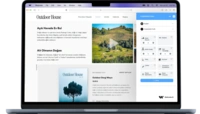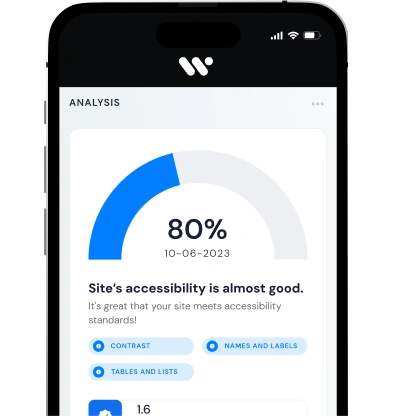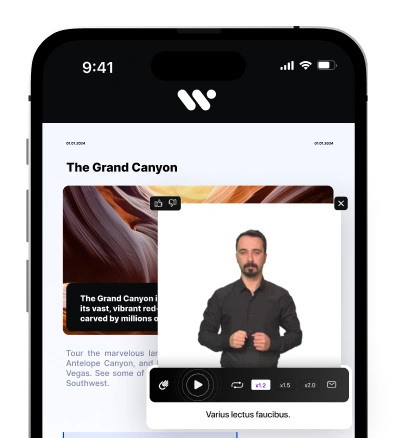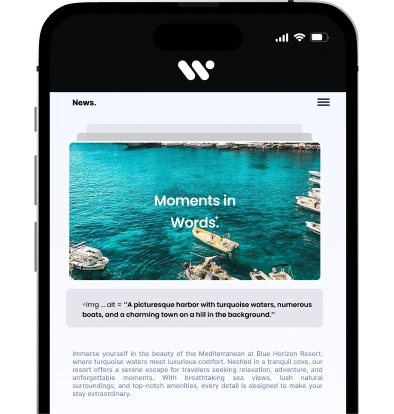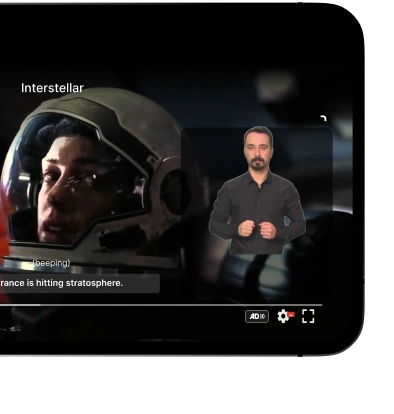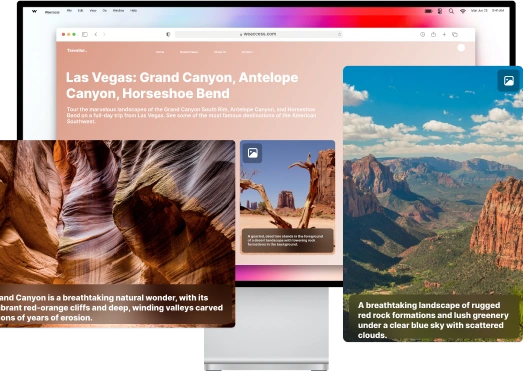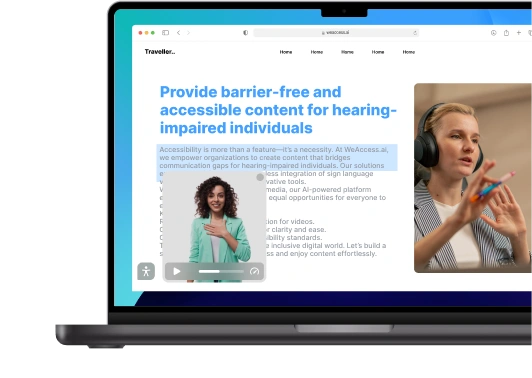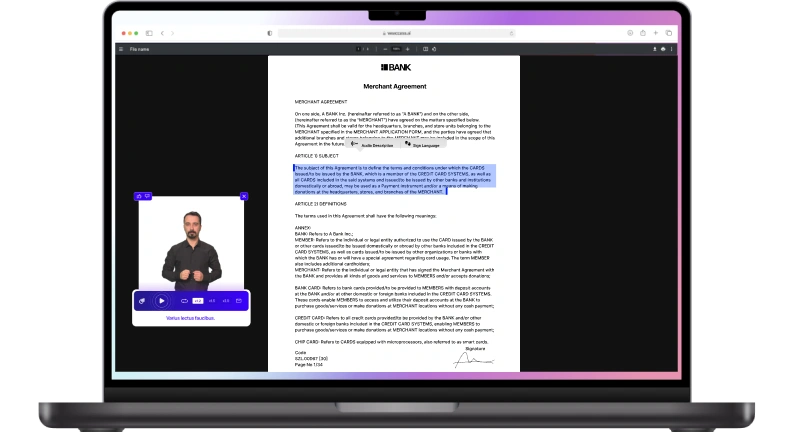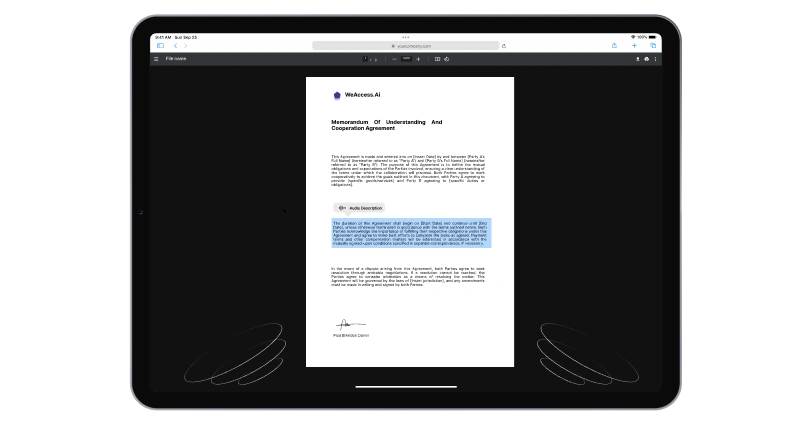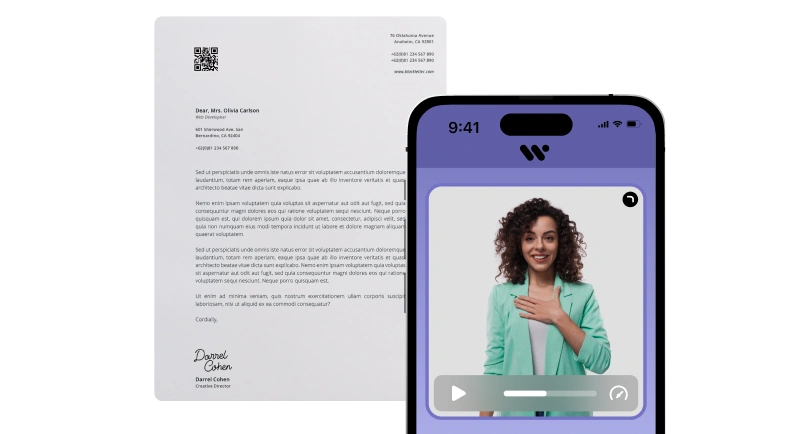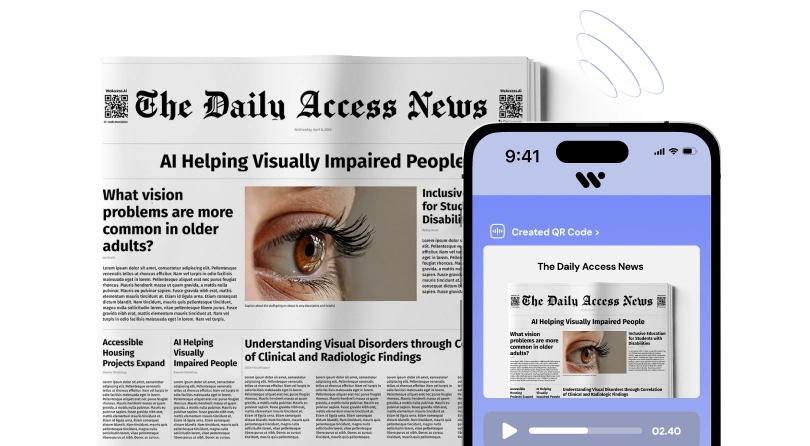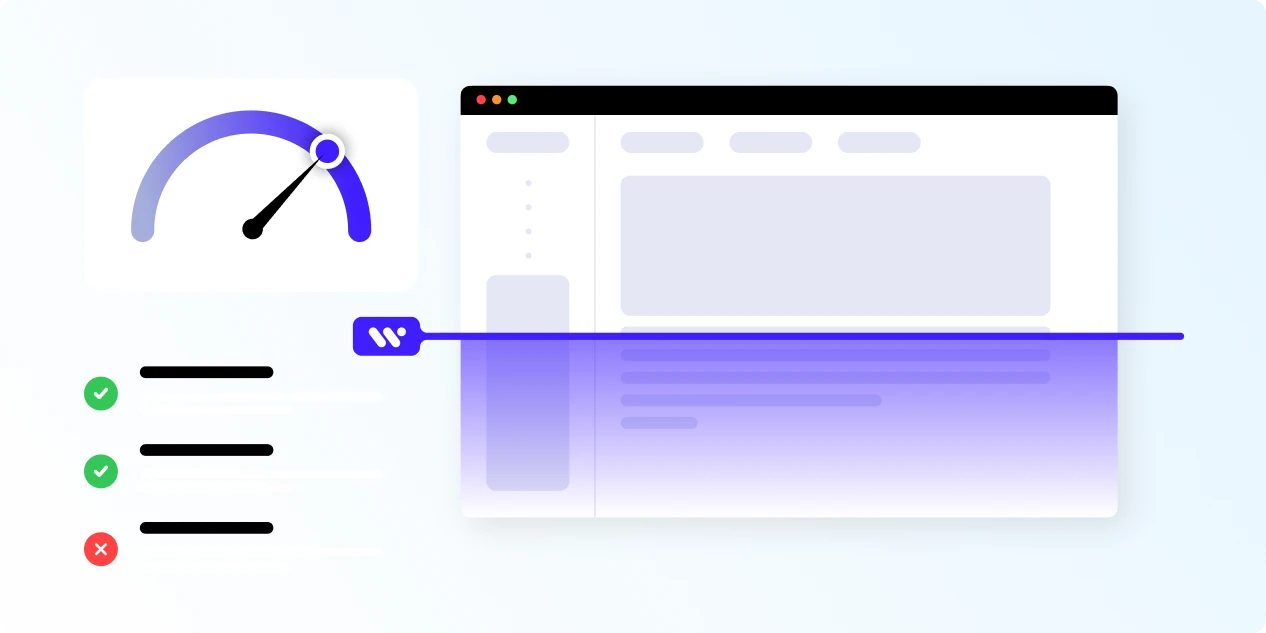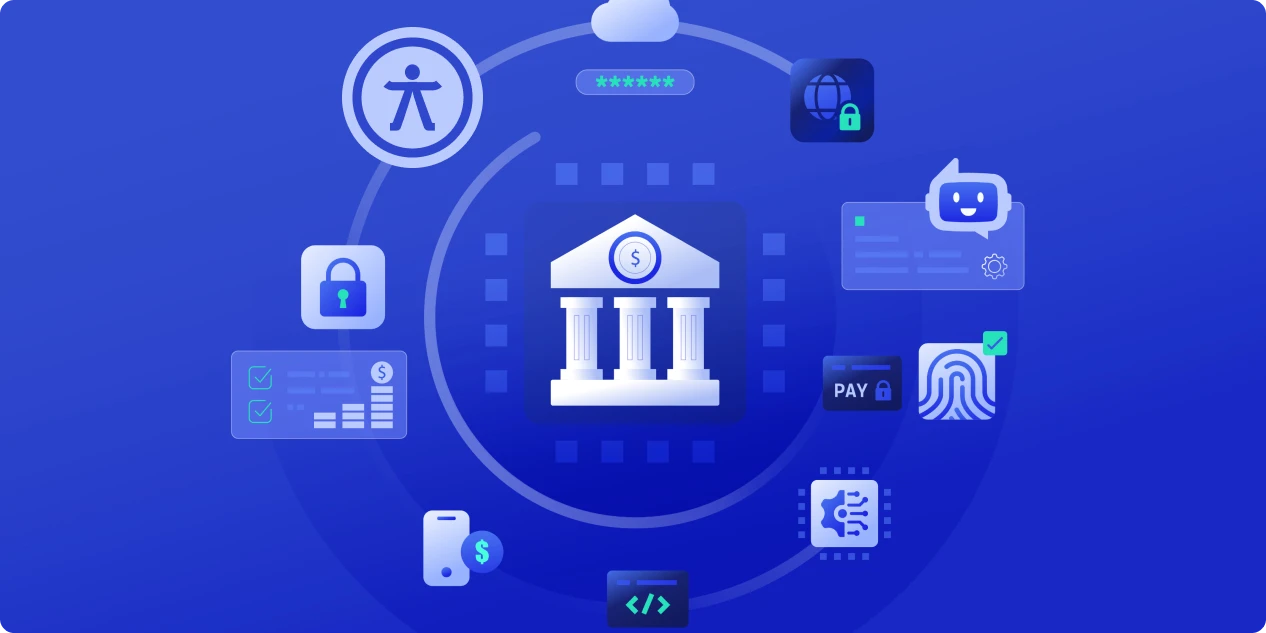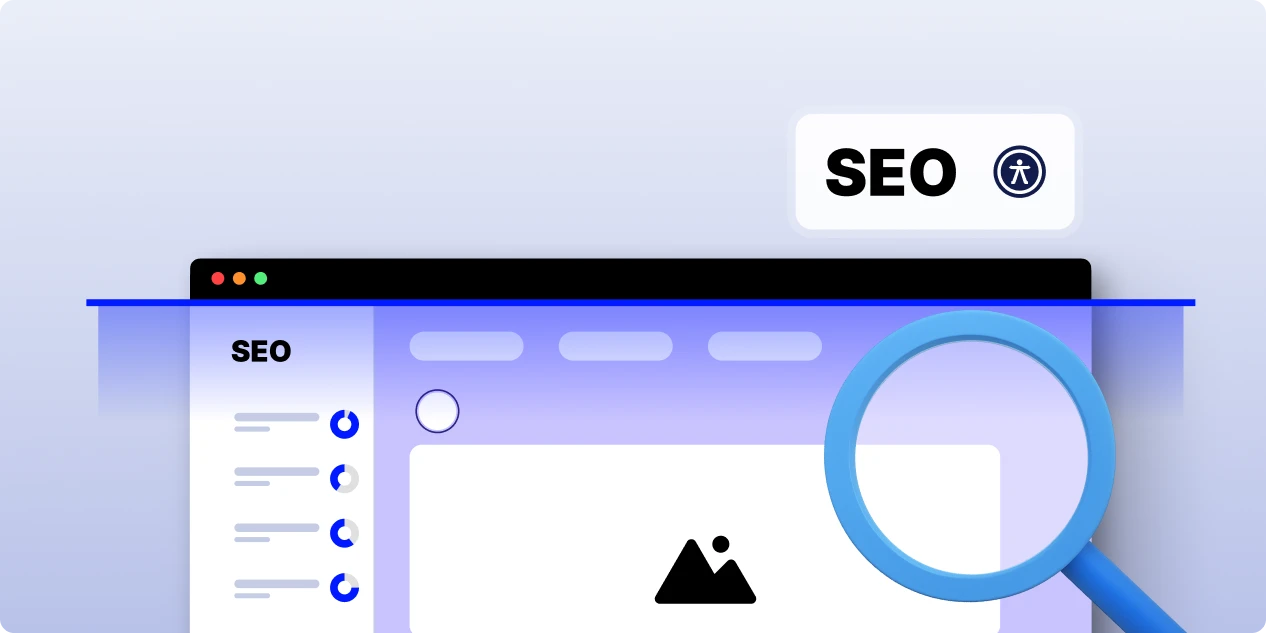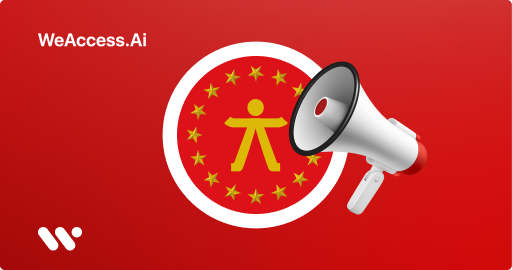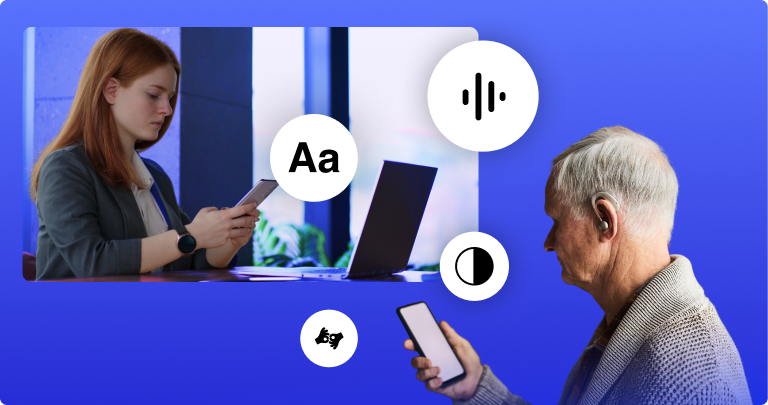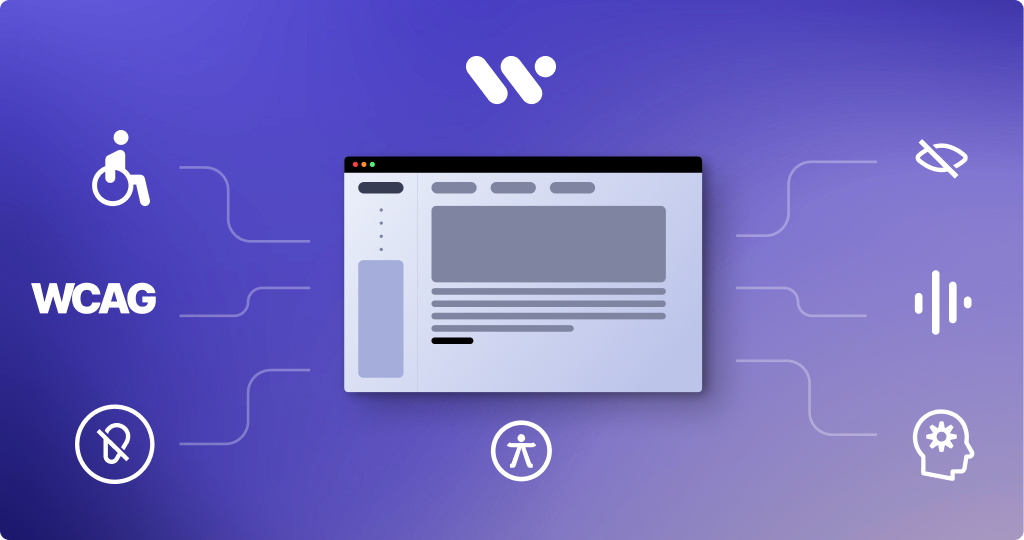Introduction to Digital Accessibility
Digital Accessibility—often defined as the "ramp for the web"—ensures equal access to information and services by designing digital platforms so everyone, including people with disabilities, can use, navigate, perceive, and understand them. At its core, it’s about digital inclusion, an essential component of modern access definition and accessibility meaning.
Web accessibility basics include implementing semantic HTML, keyboard navigation, text alternatives (like alt text and captions), and compatibility with assistive technologies. This inclusive approach reflects true access and inclusion, empowering all users to engage with online content fairly and effortlessly.
Why Digital Accessibility Matters
The importance of digital accessibility lies in providing equal access to information and services while addressing accessibility issues through features like captions and keyboard navigation.
Benefits of Digital Accessibility
- Reach more users: ~15% of the global population lives with disabilities (WHO)
- Avoid legal risks: Over 4,000 ADA web accessibility lawsuits filed in the U.S. in 2023.
- Improve SEO & usability: Accessible websites often rank higher due to better structure and usability
- Enhance user experience: Features like screen readers, keyboard navigation, and captions benefit all users
- Boost brand trust: Demonstrates commitment to digital inclusion and access and inclusion
Navigating Accessibility Standards and Legal Requirements
Digital accessibility is governed by a combination of international accessibility standards and guidelines and national regulations, ensuring that digital content is usable by all individuals, including those with disabilities.
Key Standards and Regulations
- WCAG (Web Content Accessibility Guidelines): Developed by the W3C Web Accessibility Initiative, WCAG provides a comprehensive framework for making web content accessible. It is structured around four principles: Perceivable, Operable, Understandable, and Robust, with success criteria rated at three levels: A, AA, and AAA.
- ADA compliant (Americans with Disabilities Act): A U.S. civil rights law that prohibits discrimination based on disability. While it does not explicitly mention digital accessibility, courts have interpreted it to require accessible websites for public accommodations.
- Section 508 of the Rehabilitation Act: Mandates that federal agencies' electronic and information technology be accessible to people with disabilities, ensuring equal access for employees and the public.
- W3C Web Accessibility Initiative (WAI): An initiative by the World Wide Web Consortium that develops guidelines and resources to help make the web accessible to people with disabilities.
- DOJ Consent Decree: Legal agreements where the U.S. Department of Justice enforces compliance with accessibility standards, often resulting from investigations into non-compliant entities.
- IT Accessibility Policy: Internal policies adopted by organizations to ensure that their information technology systems and services are accessible to all users, including those with disabilities.
- Accessibility Certifications: Formal recognitions that an organization's digital content meets established accessibility standards, often involving audits and testing.
- Accessibility Liability and Compliance: The legal responsibilities organizations have to ensure their digital content is accessible, and the potential consequences of non-compliance, including lawsuits and reputational damage.
- Accessibility Requirements: Specific criteria and guidelines that organizations must follow to ensure their digital content is accessible to all users.
Adhering to these standards and regulations not only ensures legal compliance but also promotes inclusivity and accessibility for all users.
Core Principles of Web Accessibility
The Web Content Accessibility Guidelines (WCAG), developed by the W3C Web Accessibility Initiative, are structured around four foundational principles known by the acronym POUR:
- Perceivable: Ensure that information and user interface components are presented in ways that users can perceive. This includes providing text alternatives for non-text content and making content adaptable to different sensory modalities.
- Operable: Design user interface components and navigation to be operable. This means making all functionality available from a keyboard and providing users with enough time to read and use content.
- Understandable: Make information and the operation of user interfaces understandable. This involves making text readable and predictable, and helping users avoid and correct mistakes.
- Robust: Ensure that content is robust enough to be interpreted reliably by a wide variety of user agents, including assistive technologies. This requires maximizing compatibility with current and future user tools.
Implementing Accessibility: Strategies, Tools, and Best Practices
Implementing digital accessibility involves integrating inclusive design practices, adhering to legal standards, and conducting thorough evaluations to ensure digital content is usable by all.
Key Steps in Implementing Digital Accessibility
1. Planning and Policy
- Accessibility Design: Incorporate accessibility from the outset using the Web Content Accessibility Guidelines (WCAG) 2.1, providing a framework for creating accessible web content.
- Accessibility Policies: Develop and enforce internal policies mandating accessibility standards across digital platforms to ensure consistency and compliance.
- Accessibility Strategies: Implement strategies including staff training, adoption of accessible technologies, and setting measurable goals for accessibility improvements.
- Procurement Teams: Select tools, software, and vendors that comply with accessibility standards to ensure all procured digital products are inclusive.
2. Compliance and Legal Adherence
- Accessibility Compliance: Ensure adherence to laws such as ADA, Section 508, and the European Accessibility Act (EAA) to prevent legal risks.
- Accessibility Laws Compliance: Stay updated on evolving accessibility laws and regulations to maintain full compliance.
- Public School Units (PSUs): Implement accessibility policies and initiatives across educational institutions to ensure learning platforms and materials are fully accessible.
3. Assessment and Monitoring
- Accessibility Audits: Conduct regular audits using both automated tools and manual testing to identify and address accessibility issues.
- Accessibility Reports: Document audit and testing findings, providing a clear overview of compliance status and areas for improvement.
- Accessibility Testing: Perform comprehensive testing, including real-world user testing with individuals with disabilities.
- Accessibility Testing Tools: Use tools like automated checkers and testing platforms to detect common accessibility issues.
- Accessibility Conformance Reports: Prepare detailed reports that evidence conformance with accessibility standards.
- Digital Accessibility Community of Practice: Collaborate with a network of experts and practitioners to share knowledge, tools, and best practices for improving accessibility across projects.
4. Measurement and Improvement
- Accessibility Metrics: Establish metrics to track progress, such as the percentage of pages meeting WCAG standards.
- Accessibility Benchmarks: Set benchmarks based on industry best practices to evaluate the effectiveness of accessibility initiatives.
- Accessibility Guidelines: Regularly review and update internal guidelines to align with current accessibility standards and best practices.
Creating Accessible Digital Content
Ensuring digital content is accessible involves implementing inclusive design principles across various media and platforms.
1. Documents and Text Content
- Accessible Documents and Forms: Utilize structured formats like tagged PDFs and accessible Word documents for compatibility with assistive technologies.
- Electronic Documents (PDFs): Ensure PDFs and other electronic documents are tagged and structured for accessibility.
- Plain Language: Employ clear and straightforward language to make content understandable for all users.
- Semantic HTML: Use proper HTML tags to structure content, facilitating navigation and comprehension for assistive technologies.
- Emails and Newsletters: Design email content that is readable, structured, and accessible to assistive technologies.
2. Media Accessibility
- Accessible Media (Captions, Transcripts): Provide captions for videos and transcripts for audio content to support users with hearing impairments.
- Video and Audio Content: Include captions, transcripts, and audio descriptions to make multimedia content accessible.
- Video Captions: Include captions in videos to aid users in sound-off environments.
- Transcripts for Audio: Provide text transcripts for audio content for users who are deaf or hard of hearing.
- Image Descriptions: Offer detailed descriptions of images to ensure content is accessible to all users.
- Alt Text (Alternative Text): Add descriptive alt text to images to convey visual information to users with visual impairments.
3. User Interface and Navigation
- Accessible UI Components: Design buttons, menus, and other interface elements to be operable via keyboard and screen readers.
- Accessible Mobile Applications: Ensure mobile apps are navigable using assistive technologies and adhere to accessibility guidelines.
- Layout and Structure: Implement consistent and logical layouts to enhance user experience and accessibility.
4. Social Media and Digital Communication
- Social Media Accessibility: Create posts that are readable and navigable for all users, including those with disabilities.
5. Accessibility Features and Customization
- Accessibility Features: Integrate adjustable text sizes, contrast settings, and other features to accommodate diverse user needs.
Assistive Technologies: Tools That Empower Users
Assistive technologies are essential tools that enable individuals with disabilities to access and interact with digital content, enhancing their independence and participation in various activities.
Key Assistive Technologies
- Screen Readers: Software that converts digital text into synthesized speech or Braille output, allowing users who are blind or have low vision to navigate and interact with digital content
- Screen Magnifiers: Tools that enlarge portions of the screen to assist users with low vision in reading text and viewing images.
- Dictation Software: Applications that convert spoken words into text, facilitating communication for individuals with mobility or dexterity impairments.
- Alternative Input Devices: Devices such as head pointers, eye-tracking systems, and adaptive keyboards that allow users with physical disabilities to interact with computers and other digital devices.
- Closed Captioning and Transcripts: Text representations of spoken content in videos, aiding individuals who are deaf or hard of hearing in understanding audio information.
Designing for Everyone: Inclusive Practices for Diverse Disabilities
Inclusive design ensures digital environments are accessible to individuals with diverse abilities, addressing specific needs across various disabilities.
Key Disability Categories and Design Considerations
- Visual Impairments: Implement screen readers, provide alt text for images, and ensure high-contrast visuals to aid navigation.
- Hearing Impairments: Incorporate captions, transcripts, and visual alerts to facilitate communication.
- Cognitive Disabilities: Use plain language, clear layouts, and consistent navigation to enhance comprehension.
- Mobility Impairments: Design keyboard-navigable interfaces and provide voice control options for ease of use.
- Language Accessibility: Offer multilingual support and culturally relevant content to accommodate diverse linguistic needs.
By considering these factors, designers can create digital experiences that are equitable and inclusive for all users.
Who’s Responsible? Roles in Making Accessibility a Reality
Ensuring digital accessibility is a collaborative effort that spans various roles within an organization. Each stakeholder contributes uniquely to creating inclusive digital experiences.
Key Roles and Their Responsibilities
- Educators and Content Creators: Responsible for producing accessible course materials, documents, and multimedia content. They should utilize accessible formats and tools, such as captioning videos and providing alternative text for images, to ensure all learners can engage with the content.
- Web Developers and Software Engineers: Tasked with implementing accessible design and coding practices. They ensure that websites and applications conform to accessibility standards like WCAG and are compatible with assistive technologies.
- Project Managers and Procurement Teams: Oversee the integration of accessibility into project planning and procurement processes. They ensure that accessibility requirements are considered from the outset and that third-party vendors provide accessible products and services.
- Accessibility Specialists and Analysts: Conduct accessibility audits, provide training, and offer guidance on best practices. They play a critical role in identifying barriers and recommending solutions to enhance digital accessibility.
- Public School Units (PSUs) and Educational Institutions: Implement policies and practices that promote digital accessibility across all levels. They ensure that educational materials and platforms are accessible to students with disabilities.
- Digital Accessibility Community of Practice: A collaborative network that shares knowledge, resources, and strategies to advance digital accessibility. This community fosters continuous learning and improvement in accessibility practices.
Training and Community Engagement: Building Awareness for Lasting Impact
Promoting digital accessibility requires ongoing training, raising awareness, and fostering community engagement to ensure inclusive digital environments.
Key Approaches
- Accessibility Training Programs: Provide structured courses and workshops to teach web accessibility principles, inclusive content creation, and accessibility testing techniques.
- Webinars on Digital Accessibility: Offer live or recorded sessions to share best practices, updates on accessibility standards, and practical implementation tips.
- Professional Learning Resources: Include guides, tutorials, and reference materials on creating accessible digital content and ensuring digital communications accessibility.
- Community Engagement: Encourage collaboration and knowledge-sharing among educators, developers, content creators, and accessibility specialists to build a strong accessibility culture.
- Awareness Campaigns: Run initiatives to highlight the importance of accessibility and equip teams with strategies for implementing inclusive digital practices.
These efforts collectively enhance understanding, compliance, and adoption of accessibility measures, creating digital experiences that are inclusive and equitable for all users.
Global Accessibility: Understanding International Standards
Digital accessibility is governed by various laws and standards worldwide, ensuring equitable access to information and services for individuals with disabilities.
United States
- Americans with Disabilities Act (ADA): Prohibits discrimination based on disability and mandates accessible digital services for public accommodations.
- Section 508 of the Rehabilitation Act: Requires federal agencies to make electronic and information technology accessible to employees and the public.
United Kingdom
- Public Sector Bodies Accessibility Regulations 2018: Mandates that public sector websites and mobile applications meet accessibility standards, ensuring digital content is perceivable, operable, understandable, and robust.
Canada
- Accessible Canada Act (ACA): Aims to create a barrier-free Canada by 2040, requiring federal organizations to identify, remove, and prevent barriers to accessibility in various areas, including digital content.
These regulations collectively promote digital inclusion and ensure that individuals with disabilities have equal access to digital resources and services.
FAQ: Digital Accessibility
Q1: Who benefits from digital accessibility?
Digital accessibility benefits everyone, including individuals with visual, hearing, cognitive, or mobility impairments. It also improves usability for older adults, non-native speakers, and users in varied environments, creating inclusive digital experiences.
Q2: What is the purpose of accessibility?
The purpose of accessibility is to ensure equal access to digital content, products, and services for all users, removing barriers that prevent people with disabilities from fully participating in digital interactions.
Q3: What is a digital accessibility strategy?
A digital accessibility strategy is a planned approach to integrate inclusive design principles, implement accessibility policies, conduct audits and testing, and maintain compliance with accessibility standards across websites, applications, and digital content.
Q4: What is a digital accessibility platform?
A digital accessibility platform provides tools and resources to monitor, test, and enhance digital content, ensuring that websites, applications, and media meet accessibility guidelines and deliver inclusive experiences for all users.
Q5: Who needs digital accessibility?
Organizations, businesses, educational institutions, and government agencies all need digital accessibility to comply with legal requirements, reach broader audiences, and foster inclusive digital engagement for users with diverse needs.

